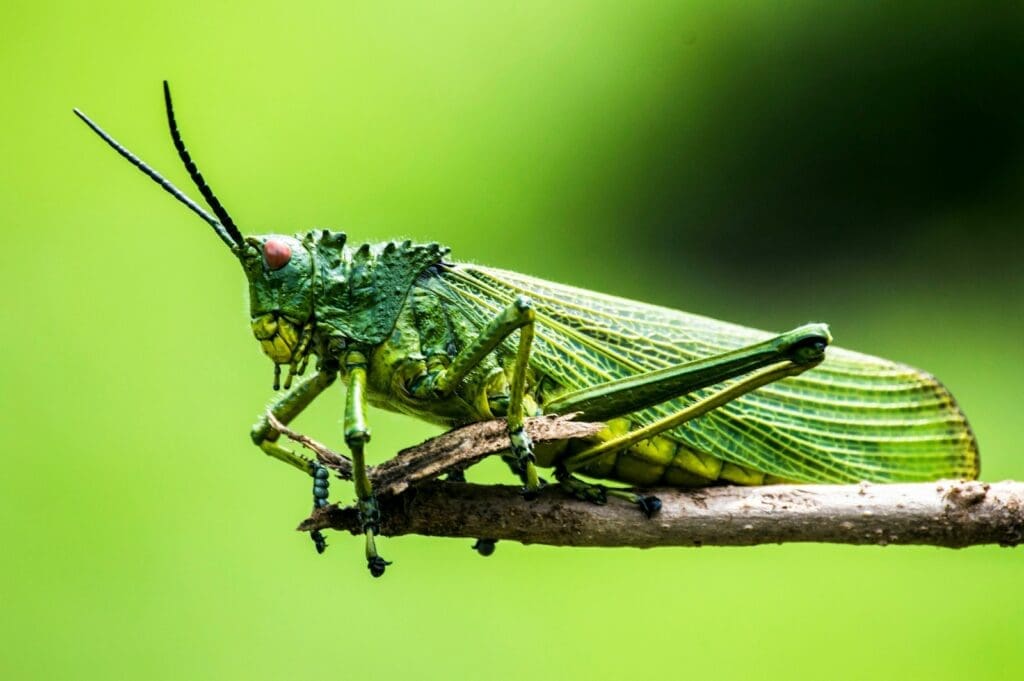
Exploring the Fascinating Realm of Insects and Reptiles
Insects and reptiles often get lumped together under the unnerving title of “creepy crawlies,” a term that does little justice to the fascinating world these creatures inhabit. Ranging from the brilliantly patterned butterfly to the stealthy gecko, these animals play crucial roles in our ecosystems. They are pollinators, predators, and prey, and their existence is vital for the health of our planet. While it’s easy to overlook these small and sometimes slithering beings, a closer look reveals a tapestry of life that is as complex as it is important.
The diversity found in the realm of insects and reptiles is staggering. With millions of insect species and over ten thousand reptilian species, these groups represent some of the most adaptable and varied forms of life on Earth. They can be found in nearly every environment, from the subterranean depths of ant colonies to the treetop canopies where chameleons change colors. Despite their size, insects and reptiles continue to have a profound impact on human cultures, economies, and scientific research.
Understanding these creatures isn’t just about overcoming a fear of the unknown, but about appreciating their contributions to our world. They are an integral part of the food web, often acting as natural pest controllers and as indicators of environmental health. Studies show that it’s time to rethink the way we view insects and reptiles, recognizing their significance beyond the label of ‘creepy crawlies’. Engaging with this secret world with curiosity and respect can lead to amazing discoveries and a greater appreciation for the multitude of life forms with whom we share our environment.
Diverse Inhabitants: Insects and Reptiles in Ecosystems
Insects and reptiles serve as vital components of ecosystems, each occupying specific niches that support biodiversity and ecological balance. These creatures are key to conservation efforts and contribute to the health of the natural environment.
Insect Roles and Reptile Niches
Insects play multifaceted roles within ecosystems. They act as pollinators, decomposers, and a food source for other species, making them crucial for the survival of many plants and animals. Bees and butterflies, for example, pollinate flowers, allowing for plant reproduction, while dung beetles recycle waste, enriching the soil.
- Pollinators: Bees, butterflies
- Decomposers: Dung beetles, termites
- Predators: Praying mantises, ladybugs
- Soil Engineers: Ants, earthworms
Reptiles, ranging from the tiny gecko to the immense Komodo dragon, establish their own unique niches within their habitats. They can be apex predators, controlling populations of other animals, or play a pivotal role in seed dispersal. Reptiles like tortoises contribute to their environments by moving seeds and other invertebrates through their digestive tracts.
- Predators: Snakes, monitor lizards
- Seed Dispersers: Tortoises
From Pollinators to Predators
The transition from pollinators to predators illustrates the intricate web of life within these systems. Insects such as bees ensure plant survival, while insect predators like praying mantises manage the population of these pollinators.
Reptiles like snakes serve as predators in the food web, controlling the population of rodents and insects. This biodiversity is critical, as it keeps the ecological balance and ensures the resilience of the natural environment.
- Bees: Vital for plant pollination
- Praying Mantises: Keep pollinator populations in check
- Snakes: Manage rodents and insect numbers
Through these varied roles, both insects and reptiles contribute to the flow of energy through food webs and maintain the quality of the air and soil. Their presence and health are indicators of the overall condition of their habitats, making them essential to conservation efforts.
Human Impact: Conservation and Decline
The balance between conservation efforts and the decline of species hinges upon actions taken in policy, advocacy, and addressing human impact on ecosystems. This section unfolds the complexities of preventing extinction and the role of various conservation endeavors.
The Plight Against Extinction
Ongoing human activities such as habitat destruction, pollution, and climate change have accelerated the decline of many insect and reptile species. Intergovernmental reports warn of the cascading effects on ecosystem stability when key species are threatened with extinction. For instance, the keystone role of insects in ecosystems underlines the urgency of reversing the decline to preserve biodiversity. While government inaction can exacerbate the problem, the adoption and enforcement of strong biodiversity policies are critical in mitigating these trends.
Nature Conservation and Advocacy
There has been a significant push for nature conservation through advocacy and creating awareness about the importance of preserving all forms of life. The intertwined nature of species interdependencies means that protecting one species often results in the safeguarding of many others within an ecosystem. Organizations and individuals work tirelessly to reshape political attitudes toward the environment, promoting laws and practices that prioritize conservation to ensure the health of the planet for future generations.
Cultural and Scientific Significance
Insects and reptiles play pivotal roles both in our cultural narratives and scientific endeavors. They ignite curiosity and contribute to advances in numerous fields from pharmaceuticals to mental health.
Creepy Crawlies in Culture and Research
Insects have been a part of human culture for millennia, embodying symbols of transformation and rebirth, as seen in the scarab beetles of ancient Egypt. In modern times, they continue to influence artistic mediums and serve as protagonists in storybooks for children. Similarly, reptiles evoke a potent cultural symbolism, often portrayed as guardians or creatures of ancient wisdom in various mythologies. Scientists, particularly entomologists, harness this fascination, contributing to an intensified interest in the study of these organisms and their habitats. Cultural perception of insects and reptiles often alters with increased advocacy and educational initiatives, creating a bridge to greater public appreciation and conservation efforts.
Advancements in Care and Knowledge
The field of herpetology has seen a significant rise in compassionate care and knowledge about reptiles, leading to better welfare standards and conservation practices. Through technological developments, such as improved habitat simulation and health monitoring tools, caregivers can foster environments closer to what reptiles experience in the wild. Innovation in technologies is also evident in entomology, where insects are studied for their contributions to cosmetics and pharmaceuticals. The silk from silkworms, for instance, plays a part in medical applications, and venom from certain reptiles is studied for its potential in pain relief, offering tremendous implications for mental health treatment. Both disciplines benefit from the continuous evolution of tech-enabled research methodologies, leading to more profound insights into the complex lives of these creatures.
Future Directions: Innovation and Technology
As technologies advance, they unlock new possibilities in the study and conservation of insects and reptiles. Innovative solutions are being developed that could revolutionize how society interacts with these often misunderstood creatures.
Emerging Technologies in Studying Fauna
Recent technological developments in imaging and genetic analysis are transforming the way scientists study insects and reptiles. High-resolution cameras and portable DNA sequencers allow for in-depth field studies previously not possible. These technologies not only aid scientists in identifying and monitoring species but also help in understanding complex ecological interactions. For instance, Lancaster University highlighted the ecological importance of insects, advocating for a change in the public’s perception to recognize their crucial roles in ecosystems.
- 3D Imaging: Detailed internal and external 3D models of creatures can be created, enabling precise studies without harming them.
- Environmental DNA (eDNA): Through this, researchers can detect species present in an area by sampling soil or water, which can play a vital role in conservation efforts for elusive or endangered reptiles and insects.
Sustainability Through Biodiversity
Biodiversity is the foundation of ecosystem productivity, and insects and reptiles play a significant part in maintaining this balance. With the help of current innovations, sustainable practices are being encouraged, emphasizing the protection of these creatures. Governments and organizations are developing battle plans against factors like habitat destruction and climate change to support biodiversity. Innovations in this field promise a sustainable future, integrating conservation strategies with community-based advocacy and education.
- Insect Protein: Sustainable food solutions such as insect protein are gaining attention for their low environmental impact. The movement towards using insect protein addresses both food security and conservation.
The intersection of technology and creative thinking can lead to substantial improvements in how biodiversity is studied, appreciated, and preserved, providing a hopeful path forward for insects, reptiles, and the environments they inhabit.




